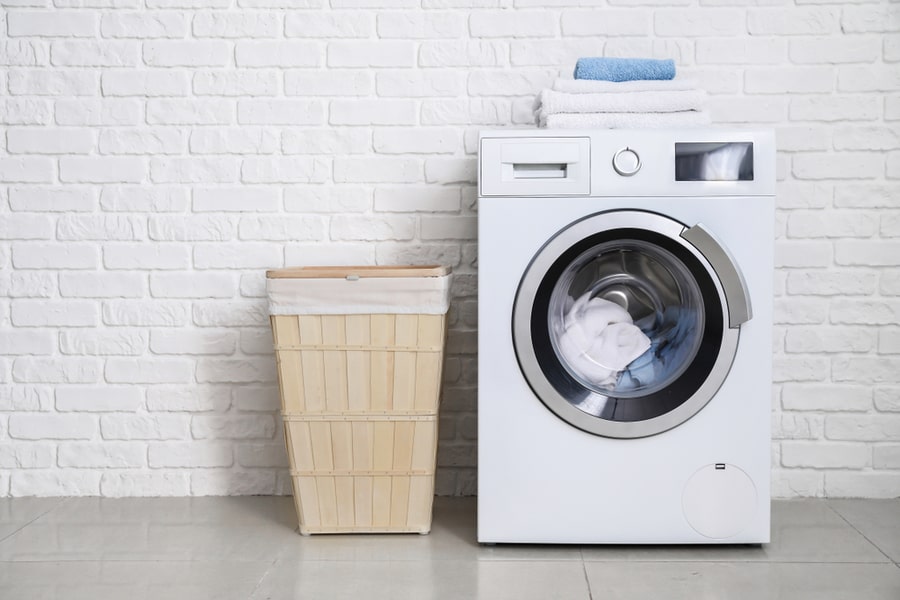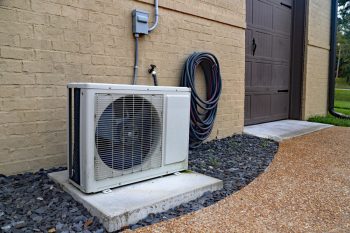
Washing machine shock absorbers do the important job of absorbing any force resulting from the machine’s spinning. Without shock absorbers, your machine would likely shake and rock back and forth while it runs.
However, these parts will wear out over time. Knowing when to replace them prevents unnecessary wear and tear on your washing machine and reduces noise in your home.
Shock absorbers in a washing machine can last between ten and twenty years. However, you may need to replace them earlier if you frequently overload your washer or run it with unbalanced loads.
Signs that it is time to replace your shock absorbers include:
- Increased noise during the spin cycle.
- Shaking or vibration during the spin cycle.
- Oil leaks from the shock absorbers.
- Visibly damaged rubber or plastic components in the shock absorbers.
In this article, we will answer several questions. When should you replace the shock absorbers in your washing machine?
How can you test for bad shock absorbers? Is it difficult and/or expensive to replace the shock absorbers in your washing machine?
Signs To Show It Is Time To Replace Your Shock Absorbers

Shock absorbers typically last between ten and twenty years. However, routinely overloading your washing machine can shorten its life.
You will know it is time to replace the shock absorbers when you notice the following changes in your washing machine.
1. Increased Noise
Your washing machine becoming louder during use, especially if you hear banging during the spin cycle, is a sign that the shock absorbers are worn out.
2. Vibration
Another sure sign that the shock absorbers are going is visible movement or increased vibration of the machine. Your washing machine should be almost motionless outside when the shock absorbers are working properly.
3. Leaking Oil
The shock absorbers should be checked if oil leaks in or around your washing machine. Shock absorbers contain oil to help them smoothly compress and release again, and a crack in the plastic or rubber body of the shock absorber can make this oil leak.
4. Cracks
Over time, the pressure of repeated compression will cause the shock absorber to break. This typically begins with the rubber or plastic sections rather than the metal because they are more fragile.
Any noticeable cracking in the plastic or rubber components of the shock absorber is a sign that it needs to be replaced.
Replacing Washing Machine Shock Absorbers

Once you’ve noticed that your washing machine’s shock absorbers need to be replaced, you’ll want to decide whether you will do it yourself or hire a professional.
The two factors most people consider when making this decision is difficulty and cost.
1. Difficulty

Replacing the shock absorbers in a washing machine isn’t complex. However, it needs to be done with precision. Installing the new shock absorbers off-center could cause damage to another part of your washing machine.
Depending on the size of your unit, you may have between two and four shock absorbers. Consult the manual of your washing machine for more details.
Step-by-Step Guide
To replace your shock absorbers, you will need the following:
- A mallet
- Slip joint pliers
- An adjustable wrench
- A 7 mm socket screwdriver
- Replacement shock absorbers compatible with your machine
- Two wooden blocks
Before you start the repair, disconnect the unit from the outlet to prevent electric shocks.
- Scoot the unit away from the wall until you can comfortably reach the back panel.
- Tilt the machine forward forty-five degrees, and prop it up with blocks.
- Use the screwdriver to remove the screws holding on the back panel.
- Feel around for the shock absorber on the right side (usually near the corner).
- Press down on the lock tab to release the shock absorber from its’ housing (you can look at the new shock absorber to see where it might be located).
- Use the pliers to pull out the old shock absorber.
- Pick up the new shock absorber with your wrench.
- Place the arrow-shaped top of the new shock absorber through the slot opening.
- Rotate it 90 degrees to lock it into place.
- Pull the bottom side of the shock absorber downward until it is lined up with the mounting bracket.
- Gently tap the pin on the bottom of the shock absorber into place with the mallet.
- Repeat this process for the bracket in the back left corner.
- Replace the back panel of the washing machine, and remove the blocks.
- Tilt it 45 degrees in the other direction to access the front panel.
- Remove the front panel.
- Follow the same process you used to replace the back shock absorbers on the front ones.
2. Cost

The cost of replacing your washing machine shock absorbers is much less than that of a new machine, so it is worth repairing.
DIY
DIY fixes are often cheaper – if you do it right first. Replacing shock absorbers in a washing machine is no exception.
You can expect to spend less than 100 dollars on parts. The exact amount depends on the brand and model of the washing machine you have.
Professional Repair
Professional repair is more expensive because you are also paying for labor costs. This usually brings the cost up to triple the price of the parts alone, although keep in mind that a professional is less likely to install the new parts incorrectly (or buy the wrong parts).
Summary
Changes in your washing machine’s noise and vibration level are often the first signs that you need to replace your washing machine’s shock absorbers.
You can expect to need to do this every ten to twenty years. You might also notice cracking or leaking oil in the shock absorbers, although most consumers don’t see this until they open up the machine.
Replacing a shock absorber isn’t a complex job; you can expect to pay a few hundred dollars for a professional. It can also be DIY-able, provided you are confident in buying the correct placement parts and installing them correctly.
Frequently Asked Questions
Do Top-Loading Washing Machines Have Shock Absorbers?
Yes, all washing machines have shock absorbers to support the spin cycles used to dry the clothes at the end of the wash cycle.
Top-loading washers are likelier to have four shock absorbers than two because the drums are bigger.
Do I Have To Replace All of the Shock Absorbers at Once?
Replacing a single shock absorber without doing the others is not a good idea. This is because shock absorbers provide the most resistance when new, and this decreases over time.
Having shock absorbers worn unevenly in your machine can cause it to run crooked and damage other components.












